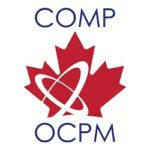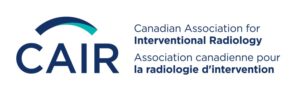Bone Mineral Density live webinar!

VCA Education Solutions For Health Professionals Inc is bringing you a live webinar on BMD!
It will be live on NOV 23 2024. The webinar will cover the following topics:
1-Introduction to Osteoporosis: Causes, Prevention, Treatment and Imaging
- Understand Bone morphology and physiology
- Explore the causes of Osteoporosis and prevention approaches
- Understand the treatment methods of Osteoporosis
- Understand the physical principles of DXA/DEXA imaging
- Explore other imaging modalities of BMD
2- BMD Quality Control (QC), Accuracy & Precision
- Understand QC and technologist role within the facility.
- Recognize the importance of accuracy & precision when performing DXA scans.
3- Patient positioning during DEXA and DEXA measurements
- Preparation of the patient for DEXA imaging
- Correct patient positioning
- Variabilities of scan length
- Alternative patient positioning and useful tips
- DEXA measurements (image analysis)
REGISTER here: www.vcaeducation.ca
Contact: valhamouche@vcaeducation.ca
MRI Guided Biopsy A to Z (Course #194)

o Indications
o Choosing the biopsy device
o Planning the approach (lat vs med)
o Core vs vacuum assisted biopsy (VAB)
Contact: juancarlos.arroyo@bayer.com
Peripheral MR Angiography A tech’s guide Dr Klass

Feb 28, 2026
Webinar from Dr. Klass
Contact: belinda.butcher@bayer.com
Module 1-MRI of the Brain and Spine

- Describe current surface coil technology, field strength and gradient power, and pulse sequences that drive MRI of the central nervous system
- Characterize specific applications of MR brain imaging, including demyelinating disease, primary brain tumors, and vascular disease
- Explain the techniques of MR angiography and venography
- Discuss why MRI of the fetal brain is superior to ultrasound
- Describe various differential diagnoses including infections, inflammatory, and vascular disease and the role of MRI in narrowing the diagnosis
Contact: Radiologysolutions.ca@bayer.com
Additional MRI Screening in women with extremely dense breasts (Recorded Webinar

Feb 28, 2026
Webinar from Dr. van Gils PhD
Contact: belinda.butcher@bayer.com
Module 11-MRI Contrast Agent Safety

- Define the different types of MR contrast media
- Determine specific contrast media appropriate for different types of MR examinations
- Recognize and respond to the most common adverse patient reactions to MR contrast agent administration
Contact: Radiologysolutions.ca@bayer.com
Rethinking Breast Cancer Screening: Abbreviated Breast MRI

Feb 28, 2026
Webinar from Dr. Kuhl
Contact: belinda.butcher@bayer.com
Module 9 – Basic Principles of MRI

- List the different types of tomographic imaging
- Explain how MRI and CT differ
- Explain the atomic structure of the hydrogen proton and its utility in MRI
- Describe how the hydrogen proton responds when placed in an external magnetic field
- Explain how a rotating magnetic field affects the behavior of hydrogen protons
- Describe how protons can be reoriented to longitudinal and transverse directions
- Compare and contrast transverse and longitudinal relaxation
- Describe the time constants relevant to transverse and longitudinal relaxation
- Explain Faraday’s law
Contact: Radiologysolutions.ca@bayer.com
Contrast Enhanced MRI – What’s new in 2020 and beyond ? (Recorded Webinar)

Feb 28, 2026
Webinar from Dr. Pietsch
Contact: belinda.butcher@bayer.com
Module 2 – Advanced MRI Neurological Applications

- Explain the fundamental principles of echo planar imaging
- Describe the mechanisms of diffusion – and perfusion -weighted imaging
- Identify clinical uses of diffusion – and perfusion -weighted imaging
- Describe the principles and applications of BOLD imaging
- Explain the basis of magnetic resonance spectroscopy
- Identify the various techniques used with MR spectroscopy
- Evaluate the factors that can affect the quality of MR spectroscopy
Contact: Radiologysolutions.ca@bayer.com
Risk Adjusted Breast Screening Strategies

Feb 28, 2026
Webinar from Dr. Mann and Dr. Sardinelli
Contact: belinda.butcher@bayer.com
Module 3 – Patient and Facility Safety in MRI

- Identify patient safety hazards as they relate to the static magnetic field and transmitted radiofrequencies
- Identify patient contraindications to an MRI examination
- Describe procedures used to ensure patient comfort and safety during an MRI scan
- Describe the biological and physical hazards of MRI
- Explain the different zones in the MRI suite and the access restrictions for each
- Discuss environmental safety procedures in MRI
Contact: Radiologysolutions.ca@bayer.com
Best Practices in Pediatric MR Protocolling Course

Dr Ravi Bhargava from Stollery Children’s Hospital discusses best practices in Pediatric MR Proticolling
Contact: belinda.butcher@bayer.com
Multidisciplinary Expert Panel on the Utilization and Application of a Liver-Specific MRI Contrast Agent (Gadoxetic Acid)

Feb 28, 2026
Contact: belinda.butcher@bayer.com
Module 4 – MRI Systems and Coil Technology

- State the advantages of the short bore MR system
- Compare advantages and disadvantages of the low-field and high-field strength magnets
- Decide what type of magnet is most suitable for a specific MR examination
- Describe the major types of MR coils and when they should be used
- Discuss advantages and disadvantages of specific MR coils
- Select appropriate coil configuration to optimize the MR examination
Contact: Radiologysolutions.ca@bayer.com
CT Contrast Extravasation: Can it be Decreased ? (Recorded Webinar)

CT scans have altered medicine in many ways, resulting in less exploratory surgeries, better pathology diagnosis, and even changes in the way doctors practice medicine. But if CT scans offer several benefits for diagnosis, CT contrast extravasations may carry downsides, from compartment syndrome to tissue necrosis.
In this video, Dr. Ryan K. Lee talks about CT contrast extravasation, its definition and its implications, and provides tips and tricks to decrease it.
Contact: belinda.butcher@bayer.com
Safety of LOCMs and Ultravist – Live Webcast

Feb 28, 2026
Contact: elinda.butcher@bayer.com
Module 5 – MR Image Postprocessing and Artifacts

- List postprocessing techniques and describe the benefits of each
- Assess which postprocessing technique is most effective for specific MR scans
- Identify standard MR system evaluation features and their appropriate uses
- Define the major types of MR artifacts and their causes
- Identify which MR artifacts can be corrected or eliminated and which can only be minimized
- Appraise the best method for correcting MR artifact for a specific MR examination
Contact: Radiologysolutions.ca@bayer.com
Module 6 – Clinical Magnetic Resonance Angiography

- Describe the role of gadolinium-based contrast agents in vascular imaging
- Explain the role of phase contrast and time-of-flight imaging to create images using magnetic resonance angiography
- Discuss bolus detection techniques and timing methods
- Recognize patient risk factors and respond to the most common adverse patient reactions to MRI contrast media
- Identify common postprocessing reconstructions used in MRA
- List the imaging techniques used in MRA and MRV for various portions of the vasculature, including those that benefit from the use of contrast enhancement
Contact: Radiologysolutions.ca@bayer.com
Module 7 – Cardiac MRI

- Explain the unique challenges of imaging the heart
- Identify the basic anatomy of the heart and great vessels
- Explain cardiac gating principles and patient safety and setup
- Discuss the principles of the primary pulse sequences and image contrast
- Describe the principles of bright-blood and black-blood pulse sequences
- Demonstrate proper planes of acquisition for obtaining standard cardiac views
- Explain common applications of cardiac MR imaging
- Apply common acquisition protocols
Contact: Radiologysolutions.ca@bayer.com
MR Imaging with a 1-molar Contrast Agent (Course #118)

• Review the basic properties of Gadovist
• Examine the performance of highly concentrated contrast agents in MRA
• Discuss technical considerations and methods for accelerating image acquisition
Contact: juancarlos.arroyo@bayer.com
Safety of Iodinated Contrast Media (Course #122)

• Types of contrast media
• Acute adverse events
• Delayed adverse events
• Contrast induced acute kidney injury
Contact: juancarlos.arroyo@bayer.com
MRI Safety (Course #138)

• MRI accidents
• Site access restrictions
• Danger to patients and staff
• MRI contraindications
• Magnetic field/scan room emergencies
Contact: juancarlos.arroyo@bayer.com
Acute Allergic Like Reactions to Gadolinium: Frequency and Severity, Recognition and Management (Course #181)

• Frequency and Severity of allergic-like reactions: Literature review and Data from Princess Margaret Cancer Centre
• Recognition of an allergic like reaction to Gadolinium
• Management of acute allergic-like reactions
Contact: juancarlos.arroyo@bayer.com
Module 10 – MR Image Formation and Imaging Techniques

- Describe the two fundamental pulse sequence categories
- Explain the time parameters TE and TR
- Discuss how the flip angle affects image appearance
- Describe how images can be enhanced with the use of contrast agents
- Describe how 2D and 3D images are generated using gradient magnetic fields
- Explain the concepts of k-space and Fourier transform
- List several additional imaging techniques and their contrast properties
- Describe how these techniques differ from conventional spin echo and gradient echo pulse sequences
Contact: Radiologysolutions.ca@bayer.com
Module 8 – Musculoskeletal MRI

- Balance effectively the parameters of spatial resolution, signal-to-noise ratio, and image contrast
- Properly position the patient and affected body part to ensure diagnostic images
- Explain the differences between arthrography and contrast-enhanced imaging and when each may be indicated
- Discuss advanced MSK MRI applications
- Reduce metal artifact in the imaging of prosthetic joints
- Describe and discuss upper and lower extremity anatomy and pathology
- Apply appropriate planes of acquisition for each body area
Contact: Radiologysolutions.ca@bayer.com
Dosimetry 3

This course is designed to build upon the topics discussed in Dosimetry 2 and to explore other current trends and technologies that influence the practice of radiation therapy today: Stereotactic Ablative Body Radiotherapy, Functional Imaging in Radiation Oncology with a focus on PET/CT, Radiobiological Modeling and Brachytherapy. Each topic focuses on the treatment planning aspects and the evolving role of the radiation therapist in relation to these emerging technologies.
The Canadian Organization of Medical Physicists (COMP) has reviewed and endorsed the Dosimetry courses and program.

Contact: cpd@camrt.ca
Essential Concepts in Radiation Biology and Protection

Examines the major components of radiation interaction with the human body. Beginning with a review of basic interaction with matter, this course explores the cellular and whole body response to radiation dose. In addition, the essentials of radiation protection are examined for both patient and Medical Radiation Technologist.
Contact: cpd@camrt.ca
Case Studies in Breast Imaging: A Team Approach
This presentation will discuss the role of different modalities for breast imaging in the identification of different pathologies and the role of the technologists.
Originally presented at the 2015 Joint Congress in Montréal (QC).
Contact: cpd@camrt.ca
Certificate in Interventional Radiology (CIR)


Interventional Radiology is an evolving practice requiring the integration of theoretical, technical, and clinical skills. The environment in an interventional imaging suite requires an inter-professional, collaborative approach to practice and patient management. This Certificate in Interventional Radiology (CIR) is intended to provide a mechanism for medical radiation technologists (MRTs) to demonstrate knowledge and competence in the field of IR, to promote standards of excellence, and to identify those who have met a nationally recognized standard in the practice of IR.
The Canadian Association of Interventional Radiology (CAIR) has reviewed and endorsed the Interventional Radiology courses and program.

Contact: specialtycertificates@camrt.ca